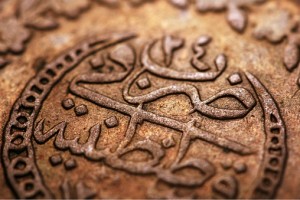The most important object of numismatics is the currency. But this science is also interested in other forms of money, such as paper currency, pre-monetary payment and coin-shaped objects such as medals, medallions, coins and religious medals.
Numismatics may also include the study of many different aspects related to coins, including history, geography, economics, metallurgy, use and production processes.
Other methods of payment, such as checks, banknotes, paper money, scripofilia and credit cards are often the subject of numismatic interest. Even the first coins or pre-coins used by primitive peoples are part of the numismatic study.

For periods in which there are few written sources, the coins are of high value as sources for both the history and for the history of science, culture and economy. This applies in particular to the Greek and Roman antiquities, but also for the areas outside of the ancient cultures of the Mediterranean (eg for the empires of the Parthians and Scythians) as well as for the first and for the high Middle Ages.
For these periods monetary recoveries, (ie the coins that are found in a tomb together with other objects or some treasure) are important not only to facilitate the dating but also as historical sources. It has developed a real numismatic of the “findings”, which currently constitutes the most dynamic and innovative methodological part of this science.
Since the Middle Ages, with the increase of frequency of written sources, numismatics is particularly linked with the history of money, which gives both historical and economic bases. In more recent times, with the strong increase in the importance of coined money, coin collecting became a milestone in the history of the economy.
In addition to a highly specialized ancillary discipline of history and archeology, numismatics also has numerous connections with neighboring disciplines like history of the economy, the social history, the history of art or onomastics.